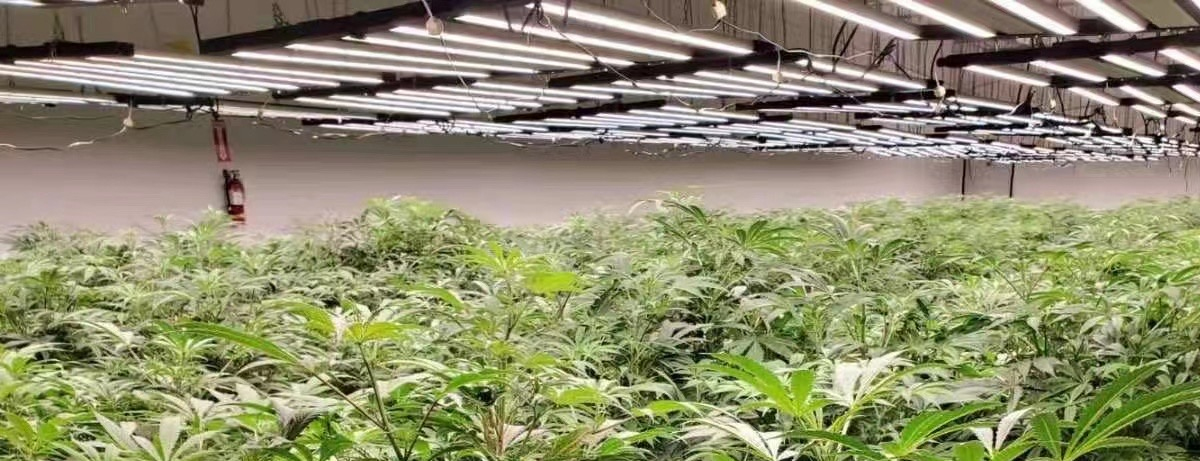With the growing popularity of indoor gardening and commercial growing, grow lights have become an integral part of this field. Different types of grow lights are competing on the market, including LED, metal halide (MH), high-pressure sodium (HPS) lamps and compact fluorescent (CFL) lamps, each with unique characteristics and application scenarios. Next, we will analyze multiple dimensions such as energy efficiency, spectral output, service life, heat production, and cost-effectiveness to help growers choose the right grow lights.

Multi-dimensional comparison of LED, MH, HPS and CFL lamps:
Features |
LED grow light | MH lamp | HPS lamp | CFL lamp |
Energy efficiency and energy consumption | Extremely high energy efficiency, high efficiency in converting electrical energy into light energy, and low long-term operating costs. | Less energy efficient than LED, but better than traditional fluorescent lamps | Energy efficiency better than MH lamps, but still lower than LEDs | Energy efficiency higher than traditional fluorescent lamps but lower than LED lamps |
Spectral output | Offers a wide spectrum range that can be adjusted to suit different plants and growth stages. | Produces rich blue light, suitable for promoting plant growth during the vegetative phase | Focuses on red light, suitable for plant flowering and fruiting stages | Provides limited spectral range, suitable for small plants or fill light |
Service life and maintenance costs | Long service life, low maintenance cost, no need to replace the bulb frequently | The service life and maintenance cost are inferior to LED, and the bulbs need to be replaced regularly | Medium service life, maintenance cost is lower than LED | Longer service life than incandescent lamps, but not as long as LED lamps |
Maintenance cost | Low maintenance cost, no need to replace bulbs frequently. | Less efficient than LED, bulbs need to be replaced regularly | Maintenance costs are lower than LED | inferior to LED |
Heat generation and cooling requirements | The heat generation is extremely low and requires little additional cooling. | Generates more heat, may require cooling system | Also generates more heat and requires a good cooling system | The heat is lower, but higher than that of LED lights |
Initial investment and long-term cost effectiveness | The initial cost is higher, but the long-term benefits are significant | Initial costs are relatively low, but long-term operating costs are high | The initial cost is moderate and the long-term cost is higher than LED | Low initial cost, long-term cost-effectiveness is inferior to LED |
Choosing the right grow light is crucial in indoor gardening and commercial growing. By comprehensively comparing the four different types of lamps: LED, MH, HPS and CFL, we can see that each lamp has its unique advantages and limitations. LED lights stand out for their high energy efficiency, broad spectral output, long life and low heat generation, making them the most cost-effective in the long term despite higher initial costs. In contrast, MH and HPS lamps provide optimized light spectrum for plants at specific growth stages, but they have higher energy consumption, heat generation and maintenance costs. CFL lights are an economical option that, although limited in spectrum, is adequate for small plants or for fill light.

The final type of light chosen depends on the grower's specific needs, growing environment, and budget constraints. Comprehensive consideration of various factors and selection of appropriate grow lights can effectively promote plant growth. With the continuous advancement of science and technology, more efficient, environmentally friendly and economical agricultural solutions may appear in the future, bringing more possibilities to indoor planting and commercial agriculture. VANQ is committed to providing the best and practical overall solutions to the problems you encounter during the planting process at the lowest cost to achieve maximum crop yield and best quality. If you want to know how to increase plant yield, you can click on the dialog box below to contact us~























